
The spider species Araneus diadematus is commonly called the European garden spider, cross orbweaver, diadem spider, orangie, cross spider, and crowned orb weaver. It is sometimes called the pumpkin spider, although this name is also used for a different species, Araneus marmoreus. It is an orb-weaver spider found in Europe, where it is native, and North America, where it was introduced.

The slimy sculpin is a freshwater species of fish belonging to the family Cottidae, which is the largest sculpin family. They usually inhabit cold rocky streams or lakes across North America, ranging from the Great Lakes, southeast Minnesota, northeast Iowa, southwest Wisconsin and northeast Canada. Slimy sculpins have also been found roaming the cold streams of eastern Siberia. They are commonly confused with their closely related relatives, Mottled sculpin, and with tubenose gobies who are both freshwater fishes as well. The slimy sculpin is a nocturnal fish that usually spends most of its time on the stream bottom and seeks shelter under rocks and logs, especially during spawning season. When it swims, it sometimes appears to be "hopping" along the bottom because of its inefficient ability to swim. This is partly due to the absence of a swim bladder, which normally gives buoyancy to a fish.

Habronattus is a genus in the family Salticidae. Most species are native to North America. They are commonly referred to as paradise spiders due to their colorful courtship ornaments and complex dances, similar to birds-of-paradise. Males display intricate coloration, while females are cryptic.
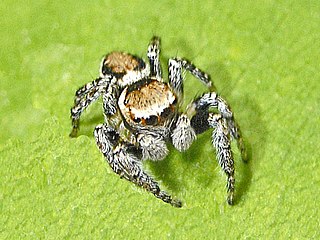
Evarcha falcata is a species of 'jumping spiders' belonging to the family Salticidae.
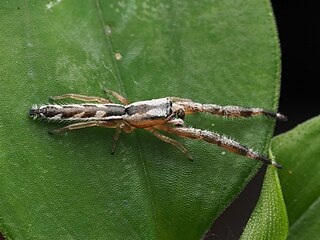
Marpissa pikei is a species of jumping spider that is found in the eastern United States, Texas, New Mexico, Arizona and Cuba.

Habronattus viridipes is a species of jumping spider that can be found in the eastern United States and southern Canada.

Habronattus fallax is a species of spider in the family Salticidae found in the United States and Mexico.

Habronattus borealis is a species of jumping spiders from the family Salticidae, found in Canada and the United States.

Habronattus americanus is a species of jumping spiders from the family Salticidae.

Habronattus pyrrithrix is a species of jumping spider in the family Salticidae. It is found in the southwestern United States and western Mexico.

Habronattus mataxus is a species of jumping spider found in Texas and northern Mexico.
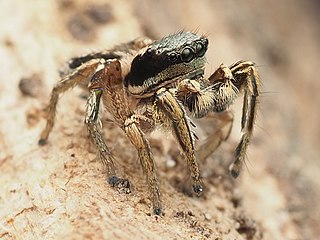
Habronattus mexicanus is a species of jumping spider in the genus Habronattus. The species was first identified in 1896 in Mexico, after which it is named, originally allocated to the genus Habrocestum. The species has subsequently been identified in locations in North and Central America, as well as islands in the Caribbean Sea. The spider is small, but displays one of the most complex sexual displays, including sophisticated vibatory song patterns.
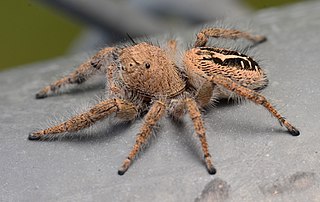
Phidippus texanus is a species of jumping spider in the family Salticidae. It is found in the United States and Mexico.

Habronattus orbus is a species of jumping spider in the family Salticidae. It is found in the United States.

Habronattus texanus is a species of jumping spider in the family Salticidae. It is found in the United States and Mexico.

Phidippus carolinensis is a species of jumping spider. It is found in the United States and Mexico.

Marpissa formosa is a species of jumping spider. It is found in the eastern United States.
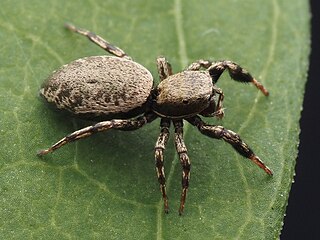
Tutelina harti is a species of jumping spider. It is found in the United States and Canada.
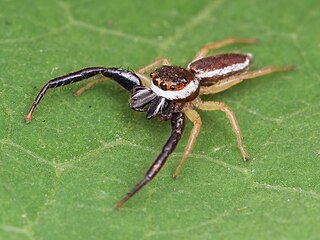
Hentzia palmarum, the common hentz jumper, is a species of jumping spider in the family Salticidae. It is found in North America, Bermuda, the Bahamas, and Cuba.

Phidippus pruinosus is a species of jumping spider in the family Salticidae. It was described by arachnologists George and Elizabeth Peckham in 1909. It is found only in the state of Texas in the United States.
























